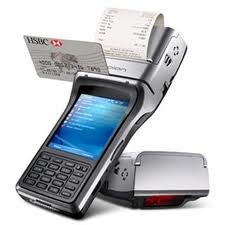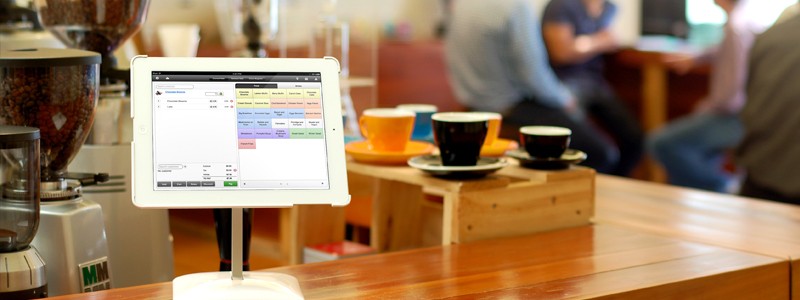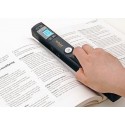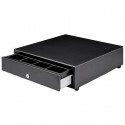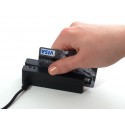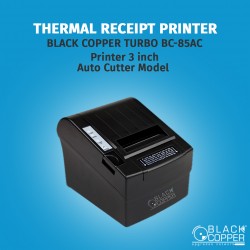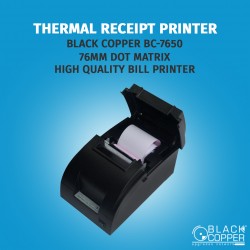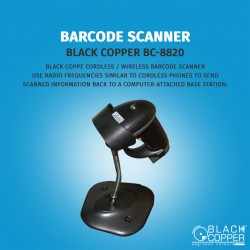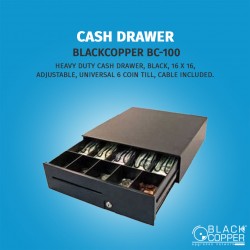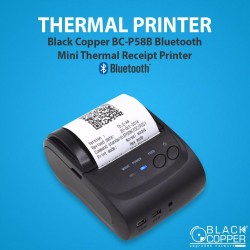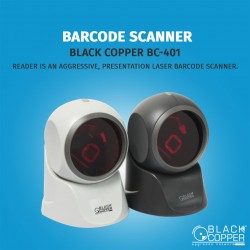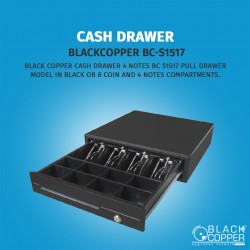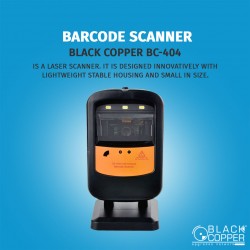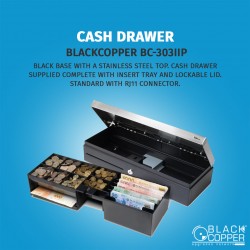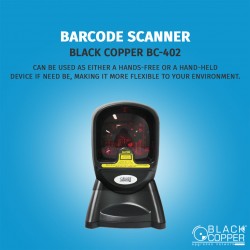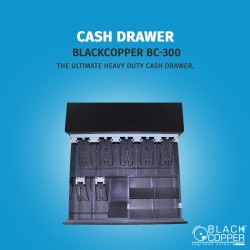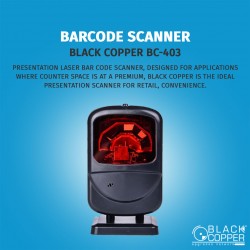Point of Sale
Catalog
The point of sale (POS) is the time and place where a retail transaction is completed. It is the point at which a customer makes a payment to the merchant in exchange for goods or after provision of a service.
Inventory software programs now on the market let you track usage, monitor changes in unit dollar costs, calculate when you need to reord...
The point of sale (POS) is the time and place where a retail transaction is completed. It is the point at which a customer makes a payment to the merchant in exchange for goods or after provision of a service.
Inventory software programs now on the market let you track usage, monitor changes in unit dollar costs, calculate when you need to reorder, and analyze inventory levels on an item-by-item basis. You can even control inventory right at the cash register with point-of-sale (POS) software systems. POS software records each sale when it happens, so your inventory records are always up-to-date. Better still, you get much more information about the sale than you could gather with a manual system. By running reports based on this information, you can make better decisions about ordering and merchandising.
With a POS system:
- You can analyze sales data, figure out how well all the items on your shelves sell, and adjust purchasing levels accordingly.
- You can maintain a sales history to help adjust your buying decisions for seasonal purchasing trends.
- You can improve pricing accuracy by integrating bar-code scanners and credit card authorization ability with the POS system.
There are plenty of popular POS software systems that enable you to use add-on devices at your checkout stations, including electronic cash drawers, bar-code scanners, credit card readers, and receipt or invoice printers. POS packages frequently come with integrated accounting modules, including general ledger, accounts receivable, accounts payable, purchasing, and inventory control systems. In essence, a POS system is an all-in-one way to keep track of your business's cash flow.
- Ease of use. Look for software with a user-friendly graphical interface.
- Entry of sales information. Most systems allow you to enter inventory codes either manually or automatically via a bar-code scanner. Once the inventory code is entered, the systems call up the standard or sales price, compute the price at multiple quantities and provide a running total. Many systems make it easy to enter sales manually when needed by letting you search for inventory codes based on a partial merchandise number, description, manufacturing code or vendor.
- Pricing. POS systems generally offer a variety of ways to keep track of pricing, including add-on amounts, percentage of cost, margin percentage and custom formulas. For example, if you provide volume discounts, you can set up multiple prices for each item.
- Updating product information. Once a sale is entered, these systems automatically update inventory and accounts receivable records.
- Sales tracking options. Different businesses get paid in different ways. For example, repair or service shops often keep invoices open until the work is completed, so they need a system that allows them to put sales on hold. If you sell expensive goods and allow installment purchases, you might appreciate a loan calculator that tabulates monthly payments. And if you offer rent-to-own items, you'll want a system that can handle rentals as well as sales.
- Security. In retail, it's important to keep tight control over cash receipts to prevent theft. Most of these systems provide audit trails so you can trace any problems.
- Taxes. Many POS systems can support numerous tax rates-useful if you run a mail order business and need to deal with taxes for more than one state.
Perhaps the most valuable way POS systems help you gain better control of your business is through their reporting features. You can slice and dice sales data in a variety of ways to determine what products are selling best at what time, and to figure out everything from the optimal ways to arrange shelves and displays to what promotions are working best and when to change seasonal promotions.
Reporting capabilities available in POS programs include sales, costs, and profits by individual inventory items, by salesperson, or by category for the day, month and year to date. Special reports can include sales for each hour of the day for any time period. You can also create multiple formats for invoices, accounting statements and price tags. Additional reports include day-end cash reconciliation work sheets and inventory management. Examine a variety of POS packages to see which comes closest to meeting your needs.
Every business is unique; you may find that none of the off-the-shelf systems meets your requirements. Industry-specific POS packages are available--for auto repair shops, beauty and nail salons, video rental stores, dry cleaners and more. In addition, some POS system manufacturers will tailor their software to your needs.
Point of Sale There are 48 products.
Subcategories
-
Printer
Black Copper have many different types of printers. In terms of the technology utilized, printers fall into the following categories:
-
Scanning & Mobility
-
Cash Drawer
Cash drawers are one of the core components to every Point of Sale System.
-
Slot Reader
-
Black Copper Turbo BC-85AC Thermal Receipt...
53 Review(s)Black Copper Turbo Thermal Receipt Printer 3 inch with Auto Cutter Model # BC-85AC BC85AC Super Fastest Thermal Printer
-
Black Copper 76mm Dot Matrix Thermal...
1 Review(s)Black Copper 76 Dot Matrix Thermal Receipt Printer BC-7650 with high quality bill printer.
-
Black Copper Wireless Barcode Scanner BC-8820
Black Coppe Cordless / Wireless Barcode Scanner use radio frequencies similar to cordless phones to send scanned information back to a computer-attached base station.
-
Black Copper Cash Drawer 5 Notes BC100
Black Copper Cash Drawers BC100, Heavy Duty Cash Drawer, Black, 16 x 16, Adjustable, Universal 6 Coin Till, Cable Included.
-
BC-P58B Bluetooth Thermal Receipt Printer
2 Review(s)Black Copper 58mm Bluetooth Mini Thermal Receipt Printer BC-P58B Portable Bluetooth Printer For POS Systems Windows - Android & IOS Supported
-
Black Copper BC-401 Barcode Scanner / Reader
Black Copper Bc-401 Barcode Scanner / Reader is an aggressive, presentation laser barcode scanner.
-
Black Copper Cash Drawer 4 Notes BC S1517
Black Copper Cash Drawer 4 Notes BC S1517 Pull drawer model in black or 8 coin and 4 notes compartments.
-
Black Copper QR Barcode Scanner BC-404
BC-404 is a laser scanner. It is designed innovatively with lightweight stable housing and small in size.
-
Black Copper Cash Drawer Flip Top BC303IIP
Black Copper Cash Drawer Flip Top BC303IIP Black base with a stainless steel top. Cash drawer supplied complete with insert tray and lockable lid. Standard with RJ11 connector.
-
Black Copper Barcode Scanner BC-402
Black Copper Barcode Scanner BC-402 can be used as either a hands-free or a hand-held device if need be, making it more flexible to your environment.
-
Cash Drawer BC300
The BlackCopper BC300 Cash Drawer is the ultimate heavy duty cash drawer.Space 8 Nodes & 4 Coins
-
Black Copper Barcode Scanner BC-403
1 Review(s)Black Copper Barcode Scanner BC-403 presentation laser bar code scanner, Designed for applications where counter space is at a premium, Black Copper is the ideal presentation scanner for retail, convenience.

